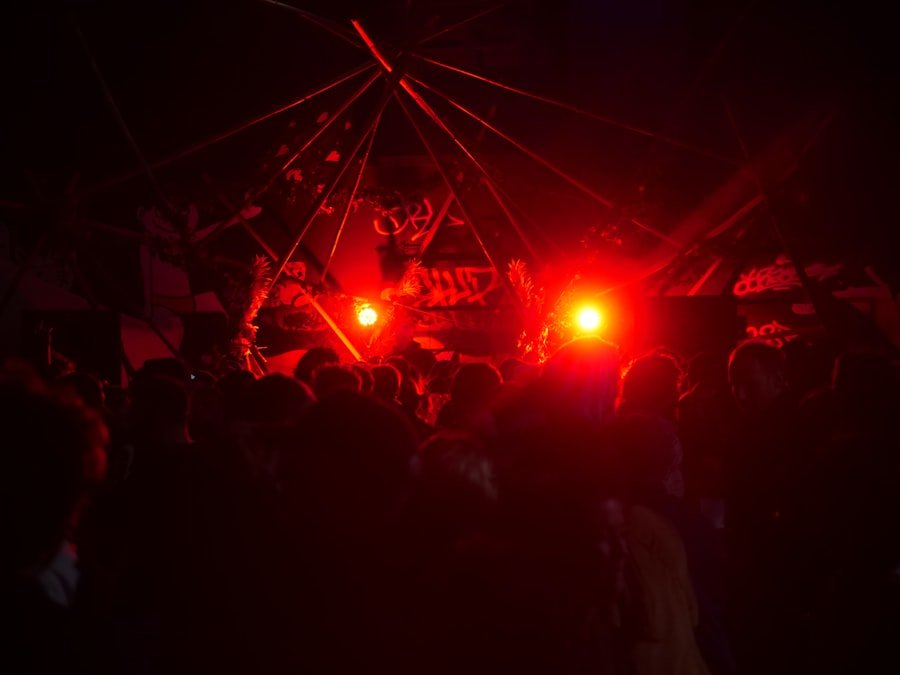Now Reading: Indie Games: Redefining Horror
-
01
Indie Games: Redefining Horror
Indie Games: Redefining Horror

As a passionate gamer, I have always been drawn to the eerie and unsettling world of horror games. The thrill of being scared, the adrenaline rush that comes with navigating through dark corridors, and the anticipation of what lurks around the corner have always captivated me. In recent years, I have noticed a significant shift in the gaming landscape, particularly with the emergence of indie horror games.
These titles, often developed by small teams or even solo developers, have carved out a niche that not only challenges traditional horror tropes but also offers fresh perspectives on storytelling and gameplay mechanics. Indie horror games have become a vital part of the gaming ecosystem, showcasing creativity and innovation that often surpasses their AAA counterparts. With limited budgets and resources, independent developers have harnessed their passion for horror to create experiences that resonate deeply with players.
This article will explore the rise of indie horror games, their unique gameplay and storytelling elements, and their profound impact on the gaming industry as a whole.
Key Takeaways
- Indie horror games are independently developed video games that focus on creating a terrifying and immersive experience for players.
- The rise of indie horror games has been fueled by the accessibility of game development tools and platforms, allowing independent developers to create unique and innovative horror experiences.
- Indie horror games often feature unique gameplay mechanics and storytelling techniques that challenge traditional gaming norms and offer a fresh perspective on the horror genre.
- The impact of indie horror games on the gaming industry has been significant, influencing mainstream titles and pushing the boundaries of what is considered “scary” in video games.
- Independent developers have played a crucial role in redefining horror in video games, bringing new ideas and perspectives to the genre and pushing the boundaries of what is possible in terms of storytelling and player immersion.
The Rise of Indie Horror Games
Democratizing Game Development
These platforms democratized game development, allowing creators to bypass traditional publishing routes and reach audiences directly. This shift enabled indie developers to take risks and push boundaries in ways that larger studios often couldn’t.
Innovative Horror Experiences
As a result, a wave of innovative horror games flooded the market, each offering unique experiences that challenged conventional gaming norms. The success of these indie titles has been remarkable, with many gaining cult followings and players eagerly anticipating sequels or spiritual successors.
Pushing Boundaries with Minimalism
The ability to experiment with unconventional narratives and gameplay mechanics has allowed indie developers to push boundaries in ways that larger studios often cannot. I find it fascinating how these games can evoke fear through minimalistic design or simple mechanics, proving that sometimes less is more when it comes to creating an atmosphere of dread.
Unique Gameplay and Storytelling in Indie Horror Games

One of the most compelling aspects of indie horror games is their unique approach to gameplay and storytelling. Unlike mainstream titles that often rely on high-budget graphics and elaborate cutscenes, indie developers frequently focus on atmosphere and emotional engagement. I have played several indie horror games where the narrative unfolds through environmental storytelling, allowing me to piece together the story through exploration rather than exposition.
This method not only immerses me in the game world but also encourages me to engage with the narrative on a deeper level. Moreover, many indie horror games embrace unconventional gameplay mechanics that challenge my expectations. For instance, titles like “Outlast” and “Layers of Fear” utilize first-person perspectives and limited player abilities to heighten tension and fear.
I often find myself feeling vulnerable, as my character lacks traditional combat options, forcing me to rely on stealth and strategy to survive. This shift in gameplay dynamics creates a sense of urgency and dread that is often absent in more action-oriented horror games.
The Impact of Indie Horror Games on the Gaming Industry
The impact of indie horror games on the gaming industry cannot be overstated. They have not only revitalized interest in the horror genre but have also influenced larger studios to take risks on innovative concepts. As I observe the gaming landscape, it is clear that mainstream developers are increasingly looking to indie titles for inspiration.
The success of games like “Five Nights at Freddy’s” and “Dead by Daylight” has demonstrated that there is a significant market for unique horror experiences, prompting larger studios to explore similar themes and mechanics. Additionally, indie horror games have fostered a sense of community among players and developers alike. I have witnessed countless discussions on forums and social media platforms where fans share their experiences, theories, and recommendations for lesser-known titles.
This sense of camaraderie has helped elevate indie horror games from niche projects to cultural phenomena, encouraging more creators to explore the genre. The collaborative spirit within this community has led to a flourishing ecosystem where ideas are exchanged freely, resulting in an ever-evolving landscape of horror gaming.
The Evolution of Horror Themes in Indie Games
As I delve deeper into the world of indie horror games, I can’t help but notice how themes within the genre have evolved over time. Early indie horror titles often relied heavily on classic tropes—haunted houses, monsters lurking in the shadows, and psychological terror rooted in isolation. However, as more developers entered the scene, I began to see a shift towards exploring more complex themes such as mental health, societal issues, and existential dread.
Games like “Hellblade: Senua’s Sacrifice” exemplify this evolution by tackling mental illness head-on while immersing players in a hauntingly beautiful world. The narrative is not just about survival; it delves into Senua’s struggles with psychosis, allowing me to experience her journey in a deeply personal way. This thematic depth adds layers to the gameplay experience, making it more than just a series of jump scares or gruesome encounters.
The Role of Independent Developers in Redefining Horror

Independent developers play a crucial role in redefining what horror can be within the gaming medium. With fewer constraints than larger studios, they are free to experiment with unconventional narratives and gameplay mechanics that challenge traditional notions of fear. I admire how these creators often draw inspiration from personal experiences or societal issues, infusing their work with authenticity that resonates with players on a profound level.
Moreover, independent developers are not afraid to tackle taboo subjects or explore darker themes that mainstream titles might shy away from. This willingness to push boundaries has led to some truly groundbreaking experiences that leave a lasting impact on players like myself. By embracing vulnerability and authenticity in their storytelling, indie developers are reshaping the landscape of horror gaming and inviting players to confront their fears in new and thought-provoking ways.
The Influence of Indie Horror Games on Mainstream Titles
The influence of indie horror games on mainstream titles is evident in various aspects of game design and storytelling. As I reflect on my gaming experiences, I can see how elements from successful indie titles have seeped into larger productions. For instance, many AAA horror games now incorporate psychological elements and atmospheric storytelling reminiscent of indie hits like “Soma” or “The Forest.” This blending of styles has enriched the genre as a whole, offering players diverse experiences that cater to different tastes.
Furthermore, the success of indie horror games has prompted larger studios to invest in smaller projects or collaborate with independent developers. This trend has resulted in innovative partnerships that bring fresh ideas into mainstream gaming while allowing indie creators to reach wider audiences. I find it exciting to see how these collaborations can lead to unique hybrid experiences that blend the best aspects of both worlds.
The Connection Between Indie Horror Games and Player Immersion
Player immersion is a critical component of any successful horror game, and indie titles excel at creating environments that draw me in completely. Through meticulous attention to detail—be it sound design, visual aesthetics, or narrative pacing—indie developers craft experiences that make me feel as though I am part of the story rather than just an observer. I often find myself holding my breath as I navigate dark hallways or solve puzzles under pressure, fully invested in the outcome.
The use of environmental storytelling further enhances this immersion by allowing me to uncover lore and backstory organically as I explore the game world. In many cases, I feel compelled to investigate every nook and cranny, driven by curiosity about what lies hidden within the shadows. This sense of discovery not only heightens my engagement but also deepens my emotional connection to the characters and their struggles.
The Psychological Impact of Indie Horror Games on Players
The psychological impact of indie horror games on players is profound and multifaceted. As someone who enjoys exploring themes of fear and anxiety through gaming, I appreciate how these titles can evoke genuine emotional responses. Many indie horror games delve into psychological terror rather than relying solely on jump scares or gore, creating an atmosphere that lingers long after I’ve put down the controller.
Games like “Silent Hill” or “Layers of Fear” tap into deep-seated fears related to identity, loss, and trauma—issues that resonate with many players on a personal level. As I navigate these narratives, I often find myself reflecting on my own experiences and emotions, leading to moments of introspection that extend beyond the game itself. This psychological engagement is what sets indie horror apart; it invites me not just to confront external threats but also to grapple with internal struggles.
The Cult Following of Indie Horror Games
The cult following surrounding many indie horror games speaks volumes about their impact on players and the gaming community at large. As I engage with fellow fans online or at conventions, it’s clear that these titles have fostered passionate communities dedicated to sharing their love for unique experiences. From fan art to theories about hidden lore, I am constantly amazed by how deeply these games resonate with others.
This cult status often leads to grassroots movements advocating for sequels or remakes of beloved titles. For instance, when “Amnesia: The Dark Descent” was released over a decade ago, it quickly garnered a dedicated fanbase that continues to celebrate its legacy today. The fervor surrounding these games highlights not only their quality but also their ability to create lasting connections between players who share similar interests.
The Future of Indie Horror Games
Looking ahead, I am excited about the future of indie horror games and what lies in store for this ever-evolving genre. As technology continues to advance—be it through virtual reality or improved graphics engines—I anticipate seeing even more immersive experiences that push boundaries further than ever before. Independent developers will undoubtedly continue to innovate and explore new themes while remaining true to their roots.
Moreover, as more players seek out unique gaming experiences outside mainstream offerings, I believe indie horror will continue to thrive. The community surrounding these games will likely grow stronger as fans rally behind new creators who dare to challenge conventions and redefine what horror can be. As someone who cherishes this genre deeply, I look forward to witnessing how indie horror evolves in the coming years—both in terms of gameplay mechanics and thematic exploration—and how it continues to shape my own gaming experiences along the way.
Indie games have been making a significant impact on the horror genre, redefining what it means to be scared in the gaming world. One related article that explores the power of gaming together is Level Up: The Power of Gaming Together. This article delves into the importance of cooperative gameplay and how it can enhance the overall gaming experience for players. By highlighting the benefits of playing games with others, it sheds light on the social aspect of gaming and how it can bring people together in a shared virtual world.



























